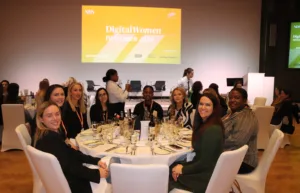by Amelia Putt, Digital Consultant at Kekst CNC
Female leadership reached an historic—albeit dubious—milestone in 2023: the year marked the first time that the number of female leaders of S&P 500 companies outstripped CEOs with names beginning “John”, according to Bloomberg.
While women’s representation in top corporate leadership positions remains painfully low, this landmark does indicate a move towards more visible female leadership. However, there’s still a long way to go, and to encourage the next generation of female leaders, the burden necessarily rests on a small group of outstanding women to raise their profile in the corporate world.
So, what are these leaders doing to amplify their content, showcase thought leadership and increase awareness for what they and their businesses are doing?
Each year, Kekst CNC analyses the LinkedIn content of FTSE100 CEOs, mapping out what they are talking about, what is driving engagement, and what other leaders can learn when it comes to their own executive content on the platform. In 2022, we evaluated 1,076 LinkedIn posts from 73 FTSE100 leaders over a 12-month span, from January – December 2022.
We’ve broken down the data based on gender, to unpack what female leaders are posting about in contrast to their male counterparts, and what we can all learn about leadership on LinkedIn.
Female FTSE100 CEOs – driving change and engagement
As female leadership in the FTSE100 remains woefully underrepresented, our analysis covers the seven women that were CEOs in 2022 – making up 11% of the cohort analysed. These women posted 196 times over the year, resulting in 15% of content – indicating that they’re more active than their male counterparts.
And this activity is paying off. Overall, this small group of women is earning a higher average engagement per post (meaning likes, comments and reposts) than the male leaders analysed. What’s also interesting is that these female leaders take a very different approach to the content they’re sharing, as shown in the graph below. Sustainability is a key topic for female leaders, making up almost 40% of the content they share. Innovation comes in second, making up 18% of their posts. What it shows us is that female leaders are keen to discuss drivers of change by focusing on these topics, in contrast to male leaders.
Source: Kekst CNC CEO LinkedIn Tracker
Also of note is that our research showed that engagement in sustainability posts has fallen, suggesting a growing fatigue with the topic – but not when it’s being shared by female leaders. Clearly, the way these women approach the topic appears to be more engaging than their male counterparts.
That said, engagement opportunities are being missed. Our research shows that irrespective of gender, sharing personal posts (that is, posts that include personal anecdotes or stories relating to a leader outside of their work) earned the highest engagement – a trend that is true for female leaders as well (see the graph below). Despite this, just 12% of female leaders’ content featured personal anecdotes, highlighting an engagement opportunity that could be capitalised on more.
Source: Kekst CNC CEO LinkedIn Tracker
While it’s difficult to say what is deterring women from sharing personal anecdotes, it would appear female leaders are less comfortable sharing personal anecdotes than their male counterparts. This could be because of pressures to be perceived as ‘professional’, or concerns that it opens up a leader to personal scrutiny.
What can leaders learn about LinkedIn from these insights?
Examining female leadership in the FTSE100, and how they communicate, brings home just how limited gender diversity is at the top of the UK corporate world. But our research also offers signs of hope – people want to hear from these women and engage with their content, particularly on sustainability and innovation, topics that will transform and change the business world. At the same time, female leaders have the chance to create greater rapport with their following through more personal content.
All leaders – female or otherwise – have an opportunity to learn from these insights, and consider how they approach content. Through our analysis of leaders, and a wider assessment of performance on LinkedIn, we recommend these five pointers for leadership content on LinkedIn:
- Be yourself. Personal anecdotes are clearly key. Audiences want to hear from people, not just brands, so amplifying corporate content won’t cut through.
- Build your community. LinkedIn now shows content to followers first, so there’s a much bigger correlation between a user’s following and the impact of their content.
- Define your areas of expertise, and stick to them. LinkedIn’s algorithm favours content that it sees as coming from ‘experts’, so revisiting a topic helps fuel this perception.
- Share your ideas. Thought leadership is key on LinkedIn now – CEOs are understandably prone to sharing company updates, but as our analysis shows, sharing unique perspectives has more impact.
- Be authentic. Yes, it’s an overused word – but if the option is for a lower-resolution image over a polished headshot, opt for the low-res image.
Kekst CNC is a client of Bluestripe Media Group, the publisher of New Digital Age.









